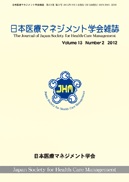Volume 11, Issue 3
Displaying 1-7 of 7 articles from this issue
- |<
- <
- 1
- >
- >|
Original Articles
-
2010Volume 11Issue 3 Pages 171-178
Published: December 01, 2010
Released on J-STAGE: December 14, 2018
Download PDF (1835K)
Case Reports
-
2010Volume 11Issue 3 Pages 179-183
Published: December 01, 2010
Released on J-STAGE: December 14, 2018
Download PDF (2858K) -
2010Volume 11Issue 3 Pages 184-188
Published: December 01, 2010
Released on J-STAGE: December 14, 2018
Download PDF (1267K) -
2010Volume 11Issue 3 Pages 189-195
Published: December 01, 2010
Released on J-STAGE: December 14, 2018
Download PDF (1151K) -
2010Volume 11Issue 3 Pages 196-200
Published: December 01, 2010
Released on J-STAGE: December 14, 2018
Download PDF (801K) -
2010Volume 11Issue 3 Pages 201-204
Published: December 01, 2010
Released on J-STAGE: December 14, 2018
Download PDF (867K)
Introductory Reports
-
2010Volume 11Issue 3 Pages 205-208
Published: December 01, 2010
Released on J-STAGE: December 14, 2018
Download PDF (1403K)
- |<
- <
- 1
- >
- >|
